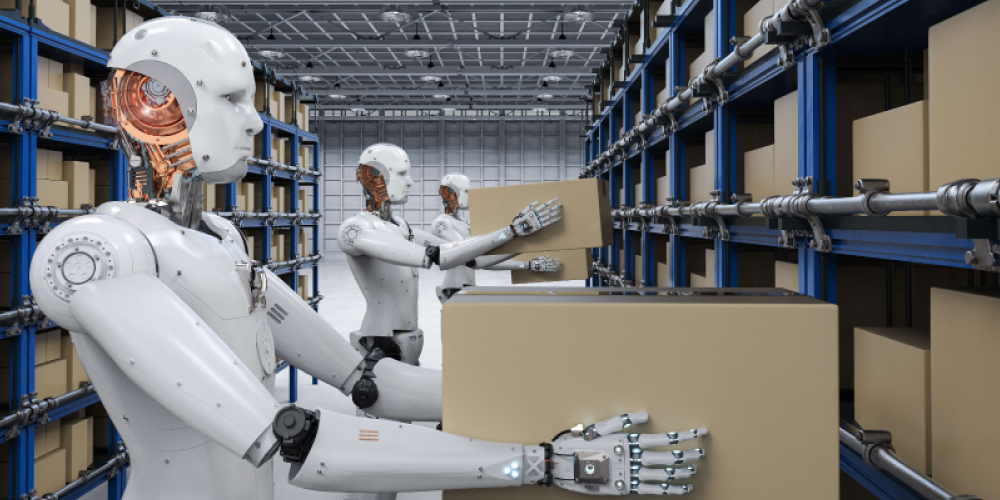Just take a moment to think about the role of technology in warehousing. It’s fascinating! By 2022, the US storage market is expected to generate a staggering $245.0 billion in revenue, according to Armstrong & Associates. That’s quite significant! What do you know? The best part is that technology is entirely to blame!
In this blog, we’ll explore several facets of warehousing. Our primary objective is to draw attention to how important technology is to this sector. We’ll examine what warehousing is, why it matters, how technology fits into it, and what problems and innovations are happening now. Happy? As you ought to be! Read the blog overview for a preview of what’s in store for you. A fascinating voyage is ahead of you.
Introduction To Warehousing
It’s a good idea to start with understanding warehousing if you have yet to gain experience with logistics. In essence, warehouses are dispersed locations for storage throughout the supply chain. They might be large warehouses that handle many items, or they can be cold storage for perishable products.
Do you know traditional warehouses are something else as of today? Things have changed gradually because of the fantastic role of technology in warehousing. Automation is helping us to maximize our profits and increase revenue worldwide. So, discussing the vitality of warehousing and technology for efficiency is a priority, and we are getting it here!
The Importance of Efficiency in Warehousing Operations
Mostly, the warehouse is brimming with goods, and you’re frantically searching and unable to locate the one item a customer desperately needs. After spending hours personally counting stock, you find inconsistencies. At this point, these instances demonstrate the technological steps and the importance of efficiency in warehousing. Remember, efficient operations result in happier consumers, lower costs, and faster order fulfillment—a win-win situation for all parties.
However, reaching maximum productivity in a warehouse can be complicated, but the technology helps in situations like those. The warehouse industry has significantly transitioned in the last five years, driven by creative ideas that are changing our operations.
As we have come to know a problem (searching for an item) we can face with the traditional warehousing system, what would you say if we described it more briefly here? We get it, so let us take a step and learn about the traditional challenges in warehousing. Then, we will move to the role of technology in warehousing.
1. Traditional Challenges in Warehousing
Inefficient use of space is a typical issue in conventional storage. Often, products are placed carelessly, wasting space and making it harder to find what you need. At the same time, manual inventory management is another problem as it is error-prone and can lead to circumstances where there are stock-outs or overs.
Furthermore, order fulfillment may be delayed and inaccurate in traditional warehouses due to a lack of real-time insight into inventory levels. However, depending too much on manual procedures might cause operations to lag and raise personnel expenses. In general, these difficulties may reduce output and affect client satisfaction.
2. Technological Innovations Transforming Warehousing
Massive technological upgrades are affecting warehouses positively. So, the following information looks into the newest developments that are revolutionizing how technology facilitates the shipment and storage of goods. Prepare to hear about its application in robotics, video game features, and warehouse management systems!
3. Warehouse Management Systems (WMS)
Warehouse Management Systems are genuinely revolutionary when optimizing warehouse operations. With many features and functions that greatly simplify our lives, these systems are like the brains behind everything. Nevertheless, these systems handle everything, including order management and inventory tracking. And what’s finest about it all? It simplifies our processes like it’s no big deal and helps us to work more efficiently.
4. Robotics and Automation
What flashes through your mind and eye whenever you hear the word “robot?” Automated people! Do you realize they are doing their parts at the warehouses and simplifying our work? Together with people, these machines are revolutionizing warehouse activities. They are brainy devices like cranes that assist us and make our tasks more accessible, from loading and unloading to choosing and packaging. In addition, many choices in terms of automated systems revolutionize warehouse operations, including conveyor belts and autonomous guided vehicles.
5. Internet of Things (IoT) Integration
Put an end to laborious spreadsheets and pointless inventory checks! It’s like having an accommodating team working in your warehouse using the Internet of Things (IoT). Take them as minuscule investigators (sensors) strategically positioned to monitor temperature, humidity, and other relevant parameters.
Checking if everything is well is like having super senses. Furthermore, you get instant access to all of this data, which facilitates easier-than-ever warehouse operations. In short, this technology is like having a steady supply of insider advice to keep everything going smoothly!
6. Artificial Intelligence Applications
Artificial intelligence is helping to optimize operations and boost productivity in warehousing as well. It automates processes such as inventory management by using algorithms to forecast demand and optimize supply levels. Moreover, robots driven by AI can choose, pack, and move things quickly and accurately, which lowers human error and expedites fulfillment procedures.
In addition, by analyzing data, machine learning algorithms maximize space usage by optimizing warehouse architecture and storage tactics. AI also makes real-time equipment and inventory monitoring possible, which promotes proactive maintenance and reduces downtime.
7. Augmented Reality (AR) and Virtual Reality (VR)
Let’s discuss virtual reality and augmented reality last. These technologies are changing not just how we play games but also how we teach our employees and increase order-picking accuracy. They can assist staff in envisioning difficult jobs and offer immersive training experiences using AR and VR. Remember, you have entered a new realm where everything has been maximized for effectiveness.
As we know, technology is continuously evolving, but still, there is a lot to be done for warehousing systems. So, the role of technology in warehousing is clear and like a crystal to us, and the next important thing is to discuss future trends before providing our final verdict.
8. Future Trends
Warehouses are becoming tech-friendly amusement attractions! We now speak about intelligent warehouse management systems anticipating client purchases and directing robots on what to pick up. Plus, wearing glasses similar to science fiction, pickers can view product information that appears magically placed on shelves.
Moreover, drones might replace forklifts as the new delivery personnel carrying light goods in their hands. Everything will occur in incredibly eco-friendly, energy-efficient structures meant to generate as little trash as possible.
Conclusion
So, the chapter on the role of technology in warehousing touches on the final point. All we conclude from our above discussion is that nothing is free of technology in such an era. Automation is continuously helping us make our lives smooth; however, when it comes to warehousing, they have shown excellent progress in revenue, as discussed in the initial part of our discussion. So, if you are planning to start a career in warehousing or logistics, get assistance from technology to get maximum results in no time.
Q. What is the history of WMC?
In 1975, J.C. Penney created one of the first real-time warehouse management systems (WMS). This technology gave warehouses real-time information about stock levels and movement, completely changing how they handled inventory and delivered orders. It significantly affected supply chain operations’ efficacy and efficiency and established a standard for WMS technology adoption throughout sectors.
Q. What information technology is used in the warehouse?
For inventory management, operational efficiency, and logistics process optimization, warehouses employ various information technologies, including barcode scanning, RFID, AS/RS (automated storage and retrieval), Warehouse Management Systems, and ERP software.
Q. What is the world’s largest warehouse?
The Boeing Everett Factory, located in Everett, Washington, USA, is, without a doubt, the world’s largest warehouse. It is the world’s largest structure and warehouse, measuring an incredible 4.3 million square feet.
Q. What surpasses a warehouse size?
Conversely, a distribution center often offers a broader range of services. Distribution centers provide value-added services, including order fulfillment, cross-docking, product mixing, packing, and product storage.





